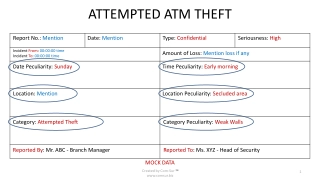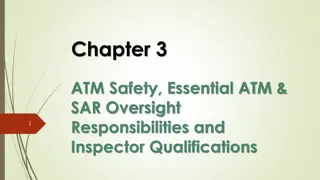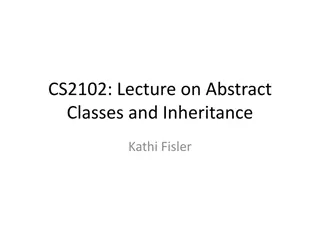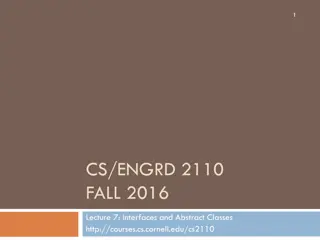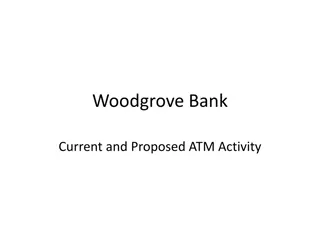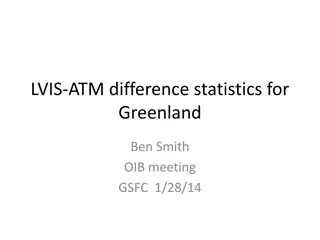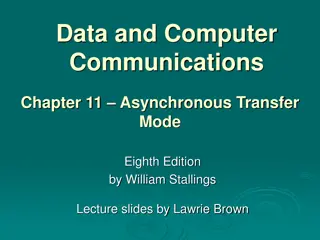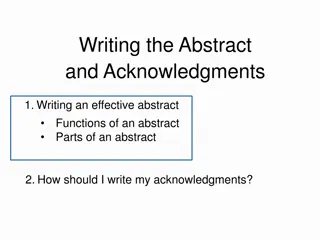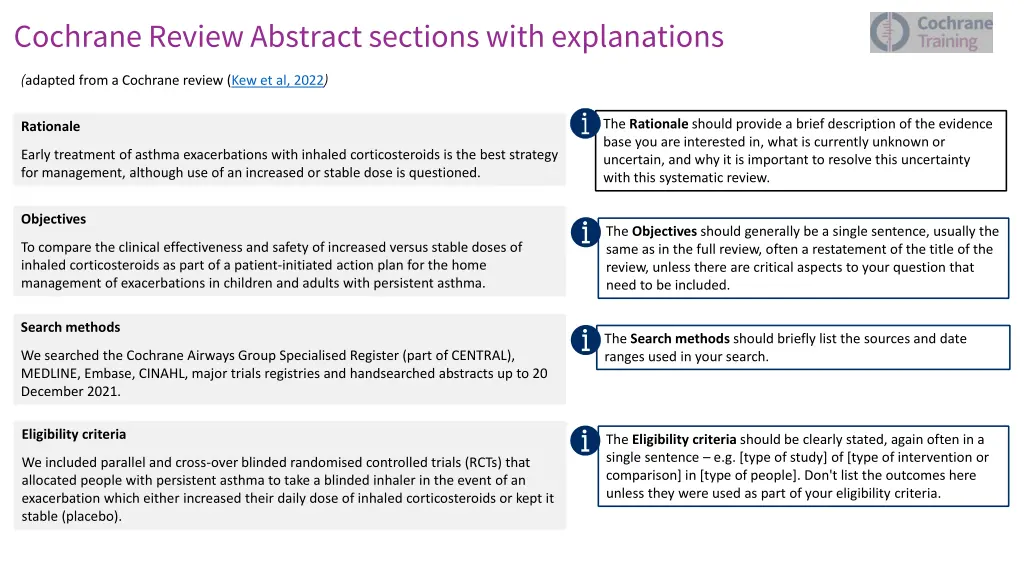
Comparing Clinical Effectiveness of Inhaled Corticosteroids in Asthma Management
Explore the comparison between increased and stable doses of inhaled corticosteroids for home management of asthma exacerbations. Reviewing trials on treatment failure, adverse events, and other outcomes to provide clarity on the best approach.
Download Presentation

Please find below an Image/Link to download the presentation.
The content on the website is provided AS IS for your information and personal use only. It may not be sold, licensed, or shared on other websites without obtaining consent from the author. If you encounter any issues during the download, it is possible that the publisher has removed the file from their server.
You are allowed to download the files provided on this website for personal or commercial use, subject to the condition that they are used lawfully. All files are the property of their respective owners.
The content on the website is provided AS IS for your information and personal use only. It may not be sold, licensed, or shared on other websites without obtaining consent from the author.
E N D
Presentation Transcript
Cochrane Review Abstract sections with explanations (adapted from a Cochrane review (Kew et al, 2022) The Rationale should provide a brief description of the evidence base you are interested in, what is currently unknown or uncertain, and why it is important to resolve this uncertainty with this systematic review. Rationale Early treatment of asthma exacerbations with inhaled corticosteroids is the best strategy for management, although use of an increased or stable dose is questioned. Objectives The Objectives should generally be a single sentence, usually the same as in the full review, often a restatement of the title of the review, unless there are critical aspects to your question that need to be included. To compare the clinical effectiveness and safety of increased versus stable doses of inhaled corticosteroids as part of a patient-initiated action plan for the home management of exacerbations in children and adults with persistent asthma. Search methods The Search methods should briefly list the sources and date ranges used in your search. We searched the Cochrane Airways Group Specialised Register (part of CENTRAL), MEDLINE, Embase, CINAHL, major trials registries and handsearched abstracts up to 20 December 2021. Eligibility criteria The Eligibility criteria should be clearly stated, again often in a single sentence e.g. [type of study] of [type of intervention or comparison] in [type of people]. Don't list the outcomes here unless they were used as part of your eligibility criteria. We included parallel and cross-overblinded randomised controlled trials (RCTs) that allocated people with persistent asthma to take a blinded inhaler in the event of an exacerbation which either increased their daily dose of inhaled corticosteroids or kept it stable (placebo).
Outcomes This section should list the outcomes of interest for the review. Treatment failure (the need for rescue oral steroids) in the randomised population and in the subset who initiated the study inhaler, unscheduled physician visits, unscheduled acute care, emergency department or hospital visits, serious and non- serious adverse events, and duration of exacerbation. Risk of bias Risk of bias should specify the methods used to assess risk of bias in the included studies. We used Risk of Bias 2 (RoB 2) and the tool's extension for cross-overtrials. Synthesis methods Synthesis methods should specify the methods to present and synthesise the review's results. We conducted meta-analyses using fixed-effect models to calculate odds ratios (OR) and 95% confidence intervals (CI) for all but one outcome, which used random- effects models due to heterogeneity (treatment failure in the subset who initiated the study inhaler). We summarised certainty of evidence according to GRADE methods. Included studies Included studies should provide the total number of included studies and participants, and may summarise relevant characteristics of studies about the applicability of the included studies. We included nine RCTs (seven parallel and two cross over) with a total of 1923 participants. The studies were conducted in Europe, North America, and Australasia and were published between 1998 and 2018. Five studies evaluated adult populations (1247 participants; 15 years), and four studies evaluated child or adolescent populations (676 participants; < 15 years). Approximately 50% of randomised participants initiated the study inhaler (range 23% to 100%). The studies reported treatment failure in various ways, so we made assumptions to allow us to combine data.
Synthesis of results In the Synthesis of results, you should then give the results for the main outcomes as specified in the protocol, including adverse effects. People randomised to increase their inhaled corticosteroids dose at the first signs of an exacerbation probably had similar odds of needing rescue oral corticosteroids to those randomised to a placebo inhaler (OR 0.97, 95% CI 0.76 to 1.25; 8 studies, 1774 participants; moderate-certainty evidence). Results for the same outcome in the subset of participants who initiated the study inhaler (approximately 50%) gives a different point estimate with very low certainty due to heterogeneity, imprecision and risk of bias (OR 0.84, 95% CI 0.54 to 1.30; 7 studies, 766 participants; random- effects model used). For this outcome and all other outcomes, we do not know if one group is favoured over the other due to the low or very low confidence in the evidence. For adverse effects, imprecision and risk of bias from missing data, outcome measurement and reporting meant we were very uncertain about the effect estimate (serious adverse events OR 1.69, 95% CI 0.77 to 3.71; 2 studies, 394 participants; non-serious adverse events OR 2.15, 95% CI 0.68 to 6.73; 2 studies, 142 participants). We had very low confidence in the effect estimates for unscheduled physician visits, unscheduled acute care, emergency department or hospital visits and duration of exacerbation due to risk of bias. Specify numbers of studies and participants, as well as the certainty of evidence for all outcomes. Make sure when you give your results that you give both the numerical results (if there s a meta-analysis or a single study), as well as a narrative interpretation, to ensure that readers unfamiliar with statistics still get your message. Do not emphasize statistical significance, but describe the results in terms of magnitude, direction, and certainty. If you re giving numerical results, make sure they re the same as in the full review, with a confidence interval. You may wish to present both absolute and relative effects to assist understanding. Convert any standardized mean differences to more meaningful units on a scale. Use standard narrative statements for describing the results of the review (see Cochrane Handbook Table 15.6.b), based on the effect size and certainty of the evidence. Authors conclusions In the Author's conclusion, you should give a brief statement on the context for interpreting your results and the important implications. Evidence suggests that adults and children with mild to moderate asthma are unlikely to have an important reduction in the need for oral steroids from increasing a patient's inhaled corticosteroid dose at the first sign of an exacerbation. Other clinically important benefits and potential harms cannot be ruled out due to wide confidence intervals, risk of bias in the studies, and assumptions made for synthesis when combining data. Included studies reflect evolving clinical practice and study methods, and the data do not support thorough investigation of effect modifiers such as baseline dose, fold increase, asthma severity and timing. The review does not include recent evidence from pragmatic, unblinded studies showing benefits of larger dose increases in those with poorly controlled asthma. Differences between the blinded and unblinded studies should be investigated.
Funding This section should include your primary funding source for conducting the review, or specify if you had no dedicated funding. This Cochrane review had no dedicated funding. Registration This section should include details of when the Cochrane review proposal was accepted and when previous versions were published, along with the DOIs, including protocols, reviews or updates, where applicable. If the review is registered, provide the register name, registration number and/or DOI. Protocol (2009): doi.org/10.1002/14651858.CD007524 Original review (2010): doi.org/10.1002/14651858.CD007524.pub3 Review update (2014): doi.org/10.1002/14651858.CD007524.pub4



